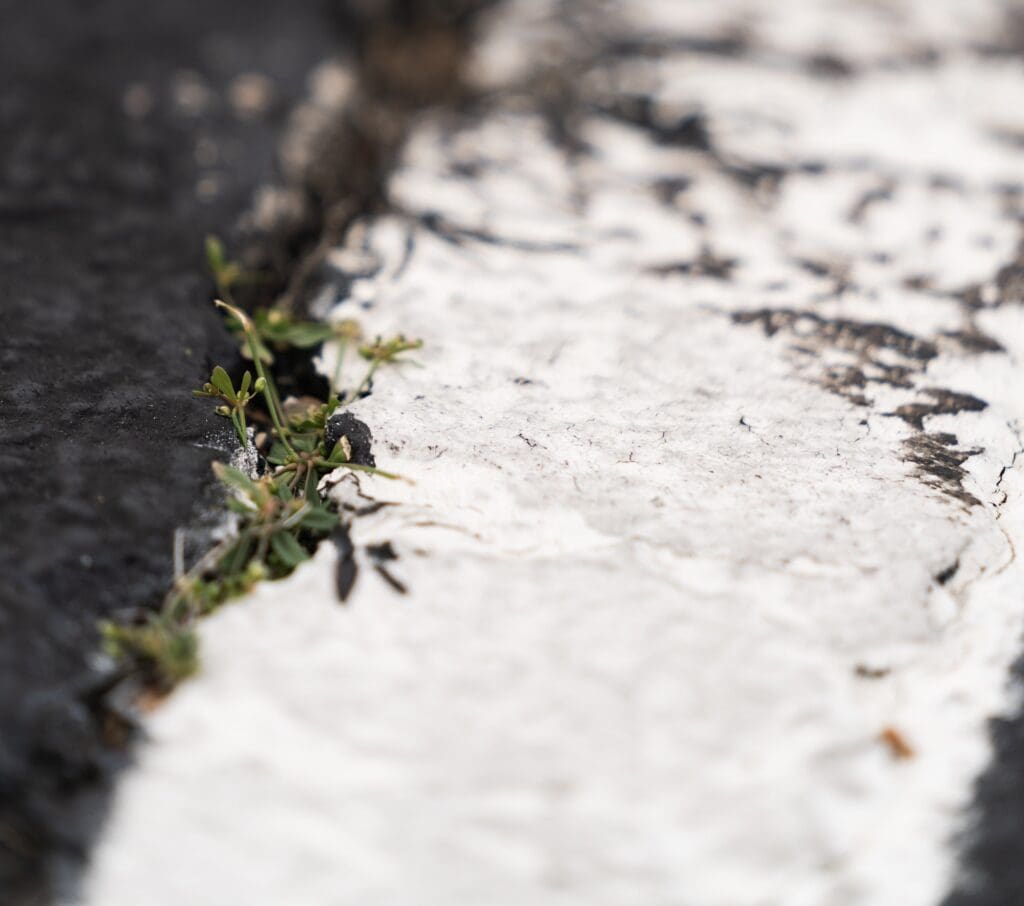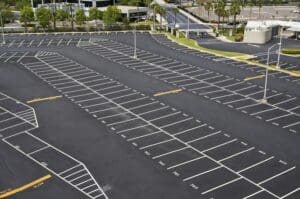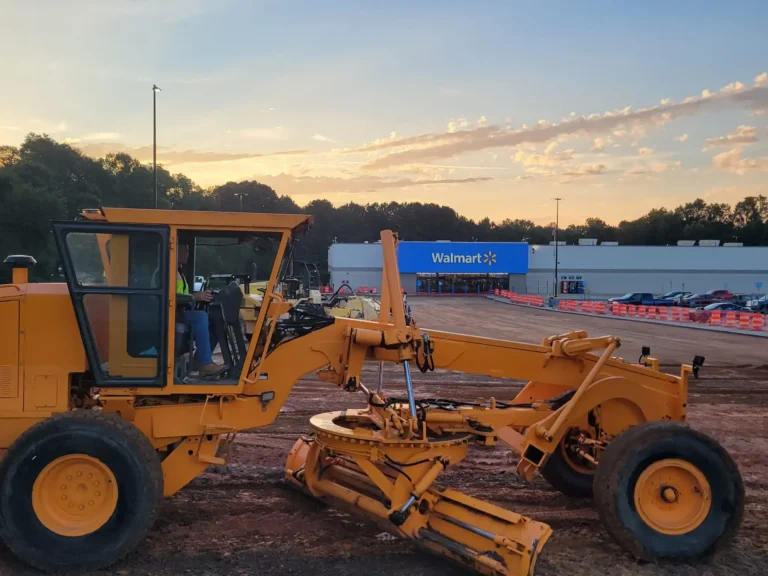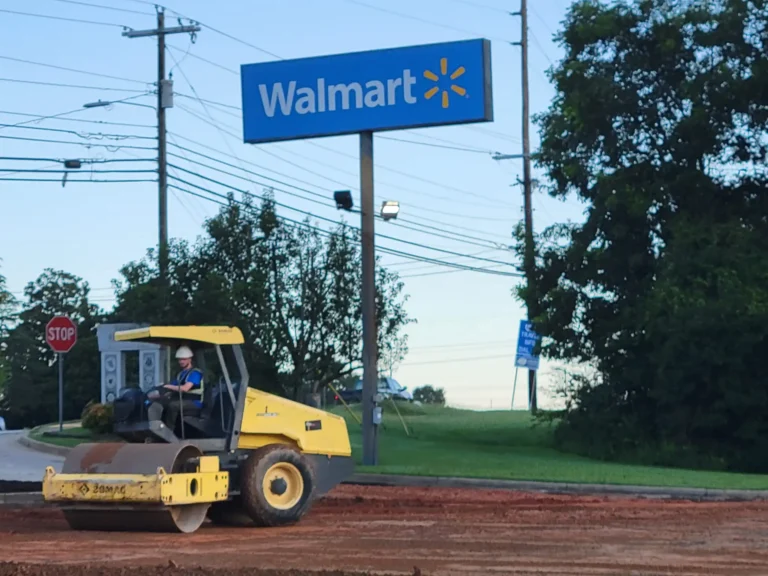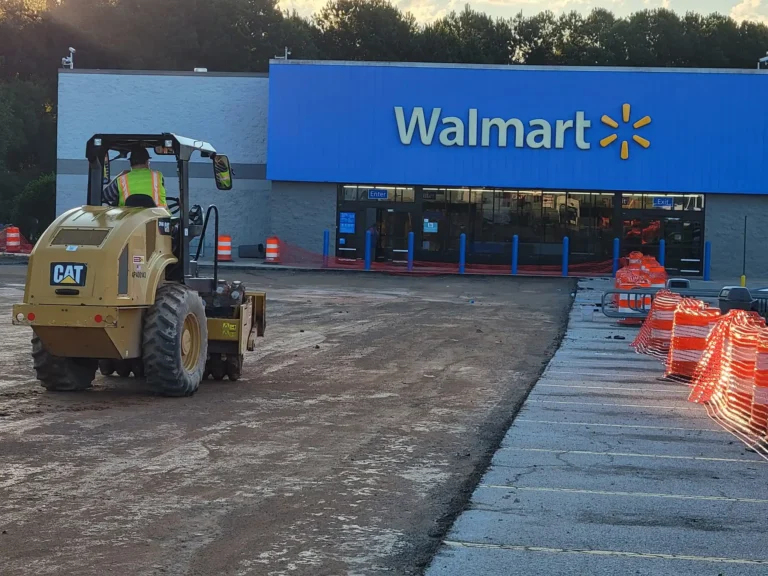Your parking lot is the welcome mat of your business. Weather, like rain and intense sunlight, affects your asphalt, degrading the surface and causing it to break apart. Regular maintenance should include sealcoating and crackfill to keep your parking lot in the best shape possible.
Sealcoating applies a layer of protective liquid over the top of your existing asphalt. This prevents drying and cracking, extends the life of your parking lot, and gives it a fresh black finish and restored appearance.
Crackfill, as the name implies, fills in cracks. One of the biggest reasons for crackfill is water intrusion. You want to keep water out and keep it from washing away your base. Untreated small cracks become much larger cracks or potholes, requiring more costly repairs down the road.
If you’re wondering what to expect from sealcoat or crackfill, we’re answering your burning questions:
How often should I consider a sealcoat and/or crackfill?
We recommend the first sealcoat treatment one year after the initial paving of your parking lot. After that, we recommend a sealcoat every three years. Crackfill can be done as often as needed, ideally at least once a year.
Are sealcoat and crackfill routine maintenance for my asphalt parking lot?
Yes. The most crucial reason to sealcoat is to keep your asphalt rich in oil content and prevent oxidizing, cracking, and water intrusion. Once those processes begin, a vicious cycle starts. Regularly scheduled sealcoating has the potential to double the lifespan of your asphalt.
Everyone wants the beautification of a sealcoat, but a proper maintenance program starts from the ground up. Suppose you are not properly maintaining your cracks and keeping water from wearing down the mineral makeup of the asphalt. In that case, your parking lot will deteriorate much quicker and cause costly problems in the future.
How do you prepare asphalt for treatment?
A series of procedures must be completed before the sealer can be applied to the asphalt surface. First, we check the condition of the asphalt. Depending on its condition, we may need to fill cracks, replace asphalt due to potholes and alligator cracking, or treat oil spots. The pavement should be clean, free of dirt and debris, and free of surface defects. Once any defects are taken care of, we will completely clean the asphalt. The extent of cleaning the pavement will depend upon its condition. It may need simple air blowing, a sweeper truck, or more involved scraping, wire brushing, or pressure washing.
How long does it take to do the job from start to finish?
Sealcoating is a relatively quick application. Depending on the size and scope of the job, it can sometimes be done in one afternoon. However, drying and cooling time can take up to 36 hours.
How long will it last, and when will I need to sealcoat my lot again?
This can depend on your traffic volumes and patterns. Ideally, seal coating needs to be performed every three years for the best results. Since there are many variables, it’s important to pick the right company, like Blackjack, to come out and guide you through the maintenance schedule.
When will I be able to drive on my lot after the sealcoating?
Traffic should be kept off a newly sealed surface for a minimum of 24 to 36 hours to allow for drying and curing. If this timeframe is not practical, sealcoating can be performed in separate applications and/or during off-peak hours for maximum convenience. It is also essential to refrain from getting the area wet for 48 hours before and after work is completed.
Can you sealcoat in the winter? Or when it’s raining?
Weather plays a significant factor in the sealcoating process. The ground being sealcoated cannot be frozen, and we cannot complete the process if it’s raining. The temperature should be at least 50 degrees and rise above 50 for 24 hours after applying the sealcoat. For this reason, it’s usually best to complete sealcoating in the summer or fall between May and October. We’ll work with you to determine which days work best based on the current weather forecast. Crackfilling is best done in April through November. Crackfilling can be completed in the winter as long as it is dry. It is best to crackfill in winter when the cracks are as wide as possible. In the colder months, cracks expand, and in the summer months, cracks contract.
Contact Blackjack Paving today to set a regular maintenance schedule and keep your parking lot in tip-top shape. When you hire Blackjack, you can rest assured that we are the best in the business. Our sealcoat product is superior. It goes down darker and smoother and lasts longer than other products on the market. We know that working on asphalt can be inconvenient, and we will put a lot of forethought into the process so that your business continues to function as smoothly as possible. Contact us today and experience the Blackjack difference.

